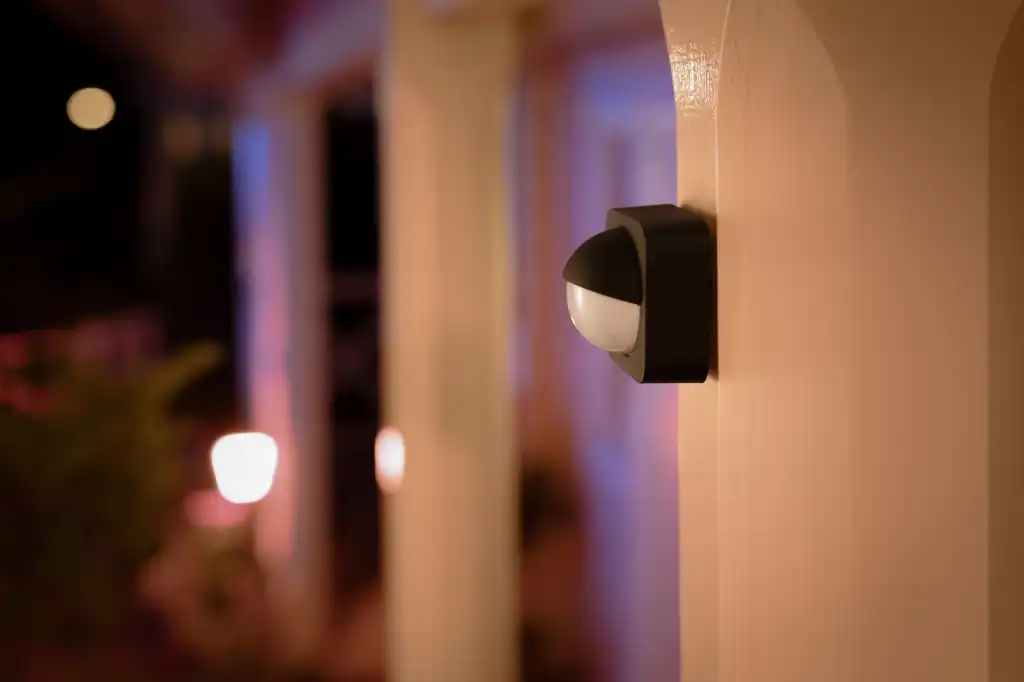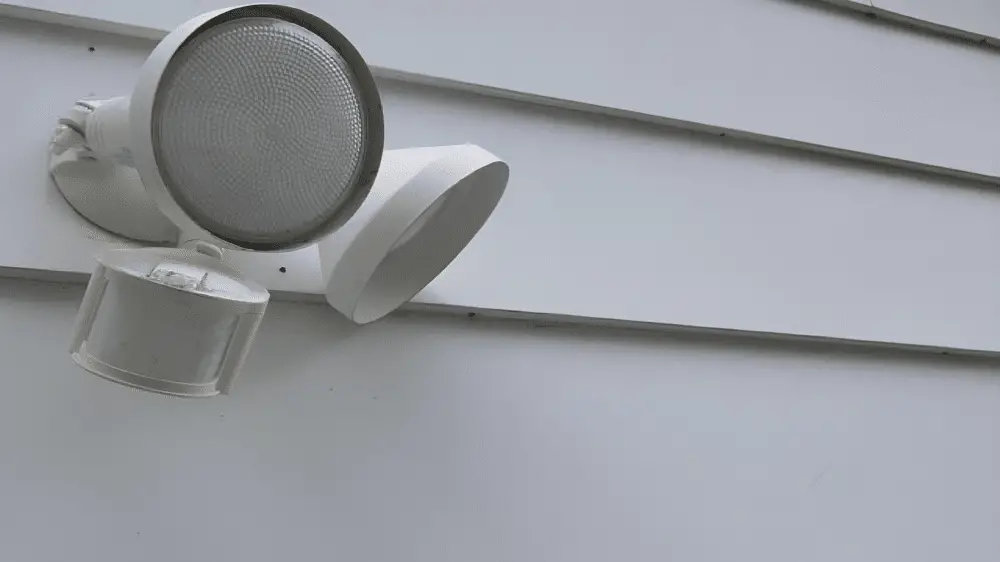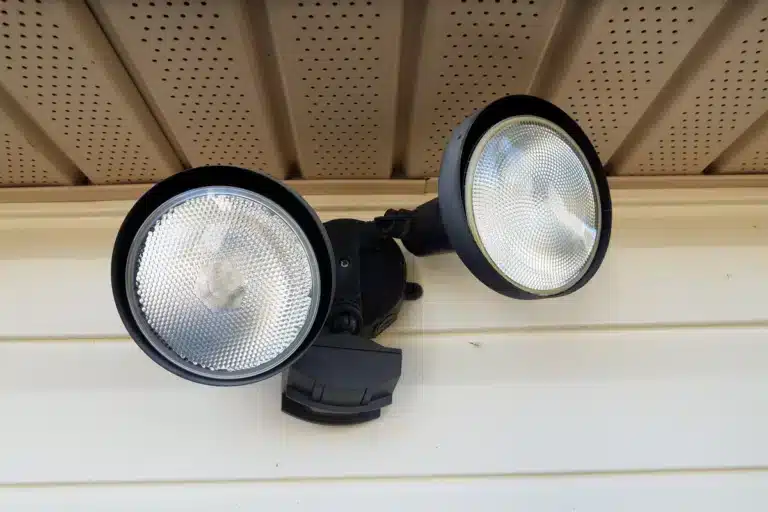Introduction
Motion sensor lights are a popular choice for outdoor and indoor lighting, providing convenience, energy efficiency, and enhanced security. These lights often come equipped with three key settings that allow users to customize their functionality: sensitivity, duration, and range. Understanding and adjusting these settings can help optimize the performance and effectiveness of motion sensor lights for various applications.
The sensitivity setting on a motion sensor light determines how sensitive the sensor is to detecting motion.Adjusting sensitivity controls the sensor’s movement response. Higher sensitivity levels activate the light with smaller movements, while lower sensitivity settings require larger motions. Finding the proper sensitivity balance prevents false alarms from little movements and ensures the light activates when needed.
Motion sensor lights’ duration settings control how long they illuminate when motion is detected. Customize how long the light stays on after activation. You can vary the length to produce appropriate lighting for a short time or longer depending on your lighting application. In high-traffic locations with frequent mobility, a shorter duration may preserve electricity. Longer durations are better for patios and driveways, where people spend more time.

What are the motion sensor lighting settings?
Motion sensor lights provide sensitivity, timing, and lux options. These three options control how sensitive the light is to movement, how long it stays on after sensing movement, and how dark it activates.
Modes for controlling motion-activated lights are called motion sensor lighting settings. Based on needs and preferences, these settings maximize lighting system performance and energy economy. Motion sensor lighting settings most often include:
Sensitivity
This setting adjusts the sensitivity level of the motion sensor, determining how easily it detects movement. Higher sensitivity settings can lead to more frequent activations, while lower settings may require closer proximity for triggering.
Time Delay
The time delay setting determines how long the lights stay on after motion is no longer detected. Users can customize this duration to conserve energy or ensure continuous illumination as needed.
Detection Range
The detection range setting defines the distance over which the sensor can sense movement. It allows users to limit or extend the range based on the area they want to cover.
Day/Night Mode
Some motion sensors have a day/night mode that enables different settings depending on whether it’s daytime or nighttime. This feature can be useful to save energy during daylight hours.
Manual Override
This setting allows users to temporarily disable the motion sensor and keep the lights on continuously when needed.
Dimming Option
Advanced motion sensor lights may offer a dimming option when no motion is detected, providing a lower level of illumination instead of turning the lights off completely.
By understanding and adjusting these motion sensor lighting settings, users can tailor their lighting system to suit their specific needs, whether it’s for security, convenience, or energy efficiency.
How do you control motion sensor lights?
Quickly Switching the Motion Sensor On and Off
One of the quick tricks you can try is to quickly turn the motion sensor ON, OFF, ON to override the motion detection and make the light stay on. To go back to motion detection mode, turn the motion sensor off, wait for about 10 seconds, and then turn it on again.
Controlling motion sensor lights is a straightforward process that involves setting up and configuring the sensor’s settings. These lights are equipped with sensors that detect movement within their vicinity and automatically turn on or off based on the detected motion. Here’s a brief overview of how to control motion sensor lights:
Installation
Begin by installing the motion sensor light in the desired location. Follow the manufacturer’s instructions for proper placement and mounting.
Power Supply
Ensure the motion sensor light is connected to a stable power source, whether it’s wired directly into the electrical system or powered by batteries for wireless models.
Sensitivity Adjustment
Most motion sensors have sensitivity adjustments, allowing you to set the range or distance at which they can detect motion. Adjust this setting according to your preference and the specific area you want to monitor.
Time Delay Setting
Many motion sensor lights come with time delay settings, which determine how long the light will stay on after motion is no longer detected. Set the desired duration for the light to remain illuminated.
Light Control
Some motion sensor lights offer additional control over the brightness level or the ability to switch between different light modes, such as continuous lighting or dimming options.
What is Lux setting on motion sensor?
Lux: Sets PIR sensor ambient light sensitivity. Setting Lux LOW activates the light in low light/dark settings. Set Lux to HIGH to activate the light when street lamps, home lights, or other light sources are present.
The Lux setting on a motion sensor indicates its ambient light sensitivity. It sets the lighting threshold at which the motion sensor activates and detects motion.
The Lux setting lets users tailor the sensor’s behavior. A low Lux setting makes the sensor sensitive to even small light changes, such as in twilight or dimly lit settings. In contrast, a high Lux setting makes the sensor less sensitive and requires a larger light change to detect motion.
If the Lux setting is raised, the sensor may only operate in complete darkness or when lighting changes significantly, saving energy during daylight or well-lit hours. Setting it to a lower number may be advantageous in regions where even small movement should trigger the sensor during the day.

What is motion sensor mode?
In away mode, the motion sensor detects movement and will trigger an alarm. In stay mode, the motion detector is not active and will not trigger an alarm. To preserve battery life, the sensor will go inactive for three minutes after it has been triggered.
Motion sensor mode is a feature commonly found in various electronic devices, particularly in lighting systems and security devices. The primary purpose of this mode is to detect movement within its vicinity and trigger a specific action accordingly. Motion sensors work through a variety of technologies, including infrared, ultrasonic, or microwave sensors, depending on the device’s design and application.
Motion sensor mode keeps the gadget in standby until it detects motion. The sensor activates when movement is detected, triggering a programmed response. A motion sensor in a lighting system can switch on the lights when someone arrives and off when no one moves for a while. Motion sensors in cameras and alarms can record or notify if they detect unlawful activity.
It saves energy and improves security, making it popular in residential, commercial, and industrial environments. Motion sensor mode improves electronic device convenience, safety, and efficiency by eliminating manual control and reacting to people and objects.
What is motion detection mode?
“motion detection” is a memory saving feature which only records footage where motion is taking place. You should NEVER drive your car with it enabled – as this will confuse the camera as you stop and start at lights etc. Some cameras have built-in methods of activating it automatically when the car stops.
Security systems, surveillance cameras, and smart gadgets have motion detection mode. It lets these gadgets detect and respond to movement in their range of view. When activated, the device continuously analyzes visual data from its surroundings.
In motion detection mode, the device sets a baseline for its environment when first activated, establishing a reference point for what is considered normal or static. Any subsequent alterations in the visual scene, such as the movement of people, animals, or objects, trigger the motion detection mechanism. The device then responds by capturing images, recording video footage, or triggering alerts to notify users of the detected motion.
This mode serves various purposes, such as enhancing security by alerting homeowners to potential intruders, assisting in video surveillance by recording only when relevant activity occurs, and conserving storage space by avoiding continuous recording. It is often customizable, allowing users to adjust sensitivity levels, the area covered by the detection zone, and the type of response the device should have when motion is detected.
What are the three main settings on a motion sensor light?
Motion sensor lights typically have three primary settings: “Off,” “On,” and “Auto.” These settings control how the light behaves in response to motion detection.
Motion sensor lights are designed to automatically detect movement and illuminate the surrounding area, enhancing security and convenience. These lights come with various settings, but the three main ones typically found are:
Sensitivity
This setting controls the range and sensitivity of the motion sensor. Users can adjust the sensitivity level to determine how easily the light will be triggered by motion. A higher sensitivity means even slight movements can activate the light, while a lower setting requires more significant motion to turn it on. Finding the right balance is crucial to prevent false activations from animals, leaves, or passing cars, while still ensuring it detects genuine threats effectively.
Time Delay
The time delay setting determines how long the light remains on after detecting motion. It allows users to specify the duration the light will stay illuminated before automatically switching off. This setting is important for conserving energy and avoiding unnecessary illumination. Common time delay options range from a few seconds to several minutes, giving users flexibility to suit their specific needs.
Range
The range setting sets the maximum distance from which the motion sensor can detect movement. Users can adjust the range to cover a smaller area, like a porch or entryway, or a larger one, such as a driveway or backyard. This setting helps to fine-tune the sensor’s coverage, preventing it from triggering too frequently or overlooking certain areas, optimizing its performance and efficiency.
How do I adjust the settings on a motion sensor light?
Adjusting the settings on a motion sensor light depends on the specific model you have. Most motion sensor lights have controls located on the fixture itself or an adjacent switch. To modify settings, follow the manufacturer’s instructions, which typically involve toggling between the “Off,” “On,” and “Auto” modes, and possibly adjusting the sensitivity, range, or duration of illumination as well. Refer to the user manual or manufacturer’s website for detailed instructions on your particular motion sensor light model.
Adjusting the settings on a motion sensor light is a relatively straightforward process, and it allows you to customize its sensitivity, duration, and range according to your specific needs. Most motion sensor lights have similar settings, and here’s a step-by-step guide to help you make the adjustments:
Identify the controls
Locate the settings panel on your motion sensor light. This panel might be on the bottom or back of the light fixture. It usually consists of dials, switches, or buttons.
Sensitivity adjustment
The sensitivity setting determines how easily the motion sensor is triggered. To increase the sensitivity and make it more responsive to motion, turn the sensitivity dial or switch to the “high” position. For reduced sensitivity, switch it to “low.”
Duration adjustment
The duration setting determines how long the light remains on once motion is detected. It typically ranges from a few seconds to several minutes. Adjust this setting to your preference, considering factors such as the area’s traffic and how long you need the light to stay on after motion is detected.
Range adjustment (if available)
Some motion sensor lights allow you to adjust the detection range. Turn the range dial to extend or reduce the distance at which motion can be detected.
Test the settings
After making adjustments, test the motion sensor light by walking within its detection zone. Make fine-tuning adjustments if necessary until you are satisfied with the settings.
Remember that the specific steps might vary depending on the make and model of your motion sensor light. If you have the product manual, it’s always a
What is the purpose of the “Auto” setting on a motion sensor light?
“Auto” mode is the default and most common setting for motion sensor lights. In this mode, the light automatically turns on when it detects movement within its designated range and remains illuminated for a predetermined time. Once no motion is detected for a specific duration, the light will automatically switch off.
The “Auto” setting on a motion sensor light serves a crucial purpose in optimizing energy efficiency and enhancing security. When set to “Auto,” the motion sensor light operates in a mode that detects movement and automatically activates the light when it senses any motion within its range. This feature ensures that the light is only on when needed, minimizing unnecessary energy consumption and reducing electricity costs.
Primarily used for outdoor security lighting, the “Auto” setting acts as a deterrent against potential intruders or unwanted animals by illuminating the area when motion is detected. This not only alerts homeowners to potential disturbances but also discourages trespassers, enhancing overall safety.
Additionally, the convenience factor cannot be overlooked. In situations where people may have their hands full or entering a dark area, the motion sensor light can automatically light the way, eliminating the need to manually switch on the light.

Conclusion
Motion sensor lights typically come with three essential settings that allow customization and control over their functionality: sensitivity, duration, and range. These settings play a crucial role in optimizing the performance and effectiveness of motion sensor lights in various outdoor and indoor lighting applications.
The sensitivity setting on a motion sensor light determines how sensitive the sensor is to detecting motion. By adjusting the sensitivity level, you can fine-tune the sensor’s responsiveness to movement. Higher sensitivity settings may result in more frequent activations, while lower sensitivity settings may require more significant movement to trigger the light. Finding the right balance of sensitivity is important to prevent false alarms caused by small or non-relevant movements while ensuring that the light reliably activates when needed.
The duration setting on a motion sensor light determines how long the light remains illuminated once motion is detected. This setting allows you to control the length of time the light stays on after activation. Depending on your specific needs, you can adjust the duration to provide ample lighting for a short period or extend it for longer illumination. Consider the purpose of the light and the area it covers when determining the ideal duration setting. For example, in high-traffic areas, a shorter duration may be sufficient, while in areas where people may spend more time, a longer duration can be beneficial.

